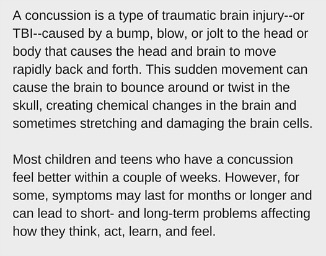Sports Culture Must Change to Reduce Head Injuries – Huffington Post
If you’ve been to the movies recently, you’ve probably seen a preview for Will Smith’s film, Concussion. In the movie, Smith portrays Dr. Bennet Omalu, the neuropathologist who first identified chronic traumatic encephalopathy (CTE) in a retired star player for the National Football League.
In social media, on the news, and now in a major motion picture, more people are talking about concussion and its long-term impact on professional athletes, their careers, and their families. As director of CDC’s Injury Center and an emergency department physician, I see this growing attention paid to concussion as an important opportunity for broadening the conversation.
For more than a decade, CDC’s National Center for Injury Prevention and Control has helped advance the public health response to concussion. Through our HEADS UP campaign, we have put concussion educational materials into the hands of coaches, parents, athletes, and school and health care professionals nationwide.
Based on our research, we know that prevention is possible. We’ve made youth sports concussion one of our focus areas, but we can’t solve this issue alone. All of us play a role in creating a culture of concussion safety.
Here’s how we can prevent sports-related head injuries.
- Change the “win-at-all costs” mentality. There’s no doubt young athletes like to win, but they don’t only play sports to win a championship. Many young athletes play sports because it’s fun. Pushing a “win-at-all costs” mentality not only makes athletes less likely to want to participate, it also puts them at risk for injuries, such as concussion. Telling athletes to “tough-it-out” or “shake-it-off” when they might have a concussion isn’t just wrong, it’s dangerous. No athlete with a possible concussion should feel pressured to keep playing out of fear of losing the game or letting down their parents, coaches, or teammates.
- Talk to your athletes about concussion. Reporting a possible concussion is the most important action young athletes can take to bring their injury to light. Yet, research shows as many as 7 in 10 young athletes with a possible concussion report that they keep playing with symptoms. And of those, 4 in 10 said their coaches weren’t aware of their injury. As parents and coaches we need to do more. Young athletes need to hear from us that it is okay to report concussion symptoms and to take as much time as they need to get better.
- Model, expect, and reinforce safe play. As many as 25 percent of the concussions reported among high school athletes result from aggressive or illegal play. Unsportsmanlike behavior isn’t good for the sport or the health of young athletes. A sports culture that supports aggressive or unsportsmanlike behavior among young athletes can increase the chances of getting a concussion or other serious injury. That kind of atmosphere also encourages athletes to hide concussion symptoms and keep playing when they are hurt.
- Get concussion information on every sideline. Coaches are busy. They have to keep their eyes on multiple athletes at the same time, especially when a certified athletic trainer is not available. The CDC HEADS UP app can help you and others be the extra set of eyes on the sideline. You can use the free app, which is available for Apple and Android devices, to help spot an athlete who may have a concussion and needs to be removed from play.
Films like Concussion help raise the awareness of all Americans about this threat to young athletes. The vast majority of them won’t ever play sports in front of millions of fans at the professional level. And that’s okay. But young athletes deserve to play sports in a culture that celebrates their hard work, dedication, and teamwork – in a safe environment. Join us in helping to stop concussions so that young people can learn the important, lifelong lessons of team sports.




